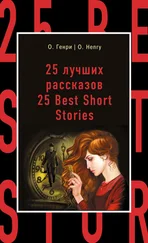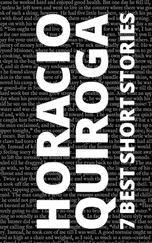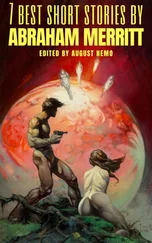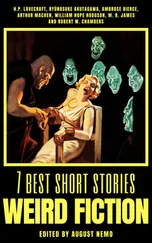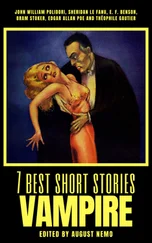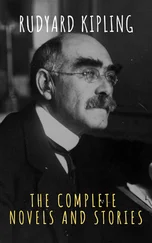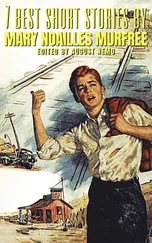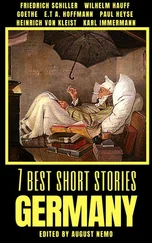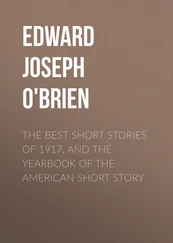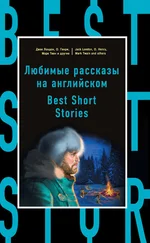The horror-tales of the powerful and cynical Guy de Maupassant, written as his final madness gradually overtook him, present individualities of their own; being rather the morbid outpourings of a realistic mind in a pathological state than the healthy imaginative products of a vision naturally disposed toward phantasy and sensitive to the normal illusions of the unseen. Nevertheless they are of the keenest interest and poignancy; suggesting with marvelous force the imminence of nameless terrors, and the relentless dogging of an ill-starred individual by hideous and menacing representatives of the outer blackness. Of these stories The Horla is generally regarded as the masterpiece. Relating the advent to France of an invisible being who lives on water and milk, sways the minds of others, and seems to be the vanguard of a horde of extra-terrestrial organisms arrived on earth to subjugate and overwhelm mankind, this tense narrative is perhaps without a peer in its particular department; notwithstanding its indebtedness to a tale by the American Fitz-James O'Brien for details in describing the actual presence of the unseen monster. Other potently dark creations of de Maupassant are Who Knows?, The Spectre, He, The Diary of a Madman, The White Wolf, On the River, and the grisly verses entitled Horror.
The collaborators Erckmann-Chatrian enriched French literature with many spectral fancies like The Man-Wolf, in which a transmitted curse works toward its end in a traditional Gothic-castle setting. Their power of creating a shuddering midnight atmosphere was tremendous despite a tendency toward natural explanations and scientific wonders; and few short tales contain greater horror than The Invisible Eye, where a malignant old hag weaves nocturnal hypnotic spells which induce the successive occupants of a certain inn chamber to hang themselves on a cross-beam. The Owl's Ear and The Waters of Death are full of engulfing darkness and mystery, the latter embodying the familiar over-grown-spider theme so frequently employed by weird fictionists. Villiers de l'Isle Adam likewise followed the macabre school; his Torture by Hope, the tale of a stake-condemned prisoner permitted to escape in order to feel the pangs of recapture, being held by some to constitute the most harrowing short story in literature. This type, however, is less a part of the weird tradition than a class peculiar to itself--the so-called conte cruel, in which the wrenching of the emotions is accomplished through dramatic tantalizations, frustrations, and gruesome physical horrors. Almost wholly devoted to this form is the living writer Maurice Level, whose very brief episodes have lent themselves so readily to theatrical adaptation in the "thrillers" of the Grand Guignol. As a matter of fact, the French genius is more naturally suited to this dark realism than to the suggestion of the unseen; since the latter process requires, for its best and most sympathetic development on a large scale, the inherent mysticism of the Northern mind.
A very flourishing, though till recently quite hidden, branch of weird literature is that of the Jews, kept alive and nourished in obscurity by the sombre heritage of early Eastern magic, apocalyptic literature, and cabbalism. The Semitic mind, like the Celtic and Teutonic, seems to possess marked mystical inclinations; and the wealth of underground horror-lore surviving in ghettoes and synagogues must be much more considerable than is generally imagined. Cabbalism itself, so prominent during the Middle Ages, is a system of philosophy explaining the universe as emanations of the Deity, and involving the existence of strange spiritual realms and beings apart from the visible world of which dark glimpses may be obtained through certain secret incantations. Its ritual is bound up with mystical interpretations of the Old Testament, and attributes an esoteric significance to each letter of the Hebrew alphabet --a circumstance which has imparted to Hebrew letters a sort of spectral glamour and potency in the popular literature of magic. Jewish folklore has preserved much of the terror and mystery of the past, and when more thoroughly studied is likely to exert considerable influence on weird fiction. The best examples of its literary use so far are the German novel The Golem, by Gustave Meyrink, and the drama The Dyhhuk, by the Jewish writer using the pseudonym "Ansky." The former, with its haunting shadowy suggestions of marvels and horrors just beyond reach, is laid in Prague, and describes with singular mastery that city's ancient ghetto with its spectral, peaked gables. The name is derived from a fabulous artificial giant supposed to be made and animated by mediæval rabbis according to a certain cryptic formula. The Dyhbuk, translated and produced in America in 1925, and more recently produced as an opera, describes with singular power the possession of a living body by the evil soul of a dead man. Both golems and dybbuks are fixed types, and serve as frequent ingredients of later Jewish tradition.
EDGAR ALLAN POE
IN the eighteen-thirties occurred a literary dawn directly affecting not only the history of the weird tale, but that of short fiction as a whole; and indirectly moulding the trends and fortunes of a great European æsthetic school. It is our good fortune as Americans to be able to claim that dawn as our own, for it came in the person of our most illustrious and unfortunate fellow-countryman Edgar Allan Poe. Poe's fame has been subject to curious undulations, and it is now a fashion amongst the "advanced intelligentsia" to minimize his importance both as an artist and as an influence; but it would be hard for any mature and reflective critic to deny the tremendous value of his work and the persuasive potency of his mind as an opener of artistic vistas. True, his type of outlook may have been anticipated; but it was he who first realized its possibilities and gave it supreme form and systematic expression. True also, that subsequent writers may have produced greater single tales than his; but again we must comprehend that it was only he who taught them by example and precept the art which they, having the way cleared for them and given an explicit guide, were perhaps able to carry to greater lengths. Whatever his limitations, Poe did that which no one else ever did or could have done; and to him we owe the modern horror-story in its final and perfected state.
Before Poe the bulk of weird writers had worked largely in the dark; without an understanding of the psychological basis of the horror appeal, and hampered by more or legs of conformity to certain empty literary conventions such as the happy ending, virtue rewarded, and in general a hollow moral didacticism, acceptance of popular standards and values, and striving of the author to obtrude his own emotions into the story and take sides with the partisans of the majority's artificial ideas. Poe, on the other hand, perceived the essential impersonality of the real artist; and knew that the function of creative fiction is merely to express and interpret events and sensations as they are, regardless of how they tend or what they prove--good or evil, attractive or repulsive, stimulating or depressing, with the author always acting as a vivid and detached chronicler rather than as a teacher, sympathizer, or vendor of opinion. He saw clearly that all phases of life and thought are equally eligible as a subject matter for the artist, and being inclined by temperament to strangeness and gloom, decided to be the interpreter of those powerful feelings and frequent happenings which attend pain rather than pleasure, decay rather than growth, terror rather than tranquility, and which are fundamentally either adverse or indifferent to the tastes and traditional outward sentiments of mankind, and to the health, sanity, and normal expansive welfare of the species.
Читать дальше
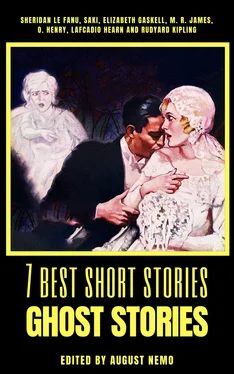
![Коллектив авторов - Best Short Stories [С англо-русским словарем]](/books/26635/kollektiv-avtorov-best-short-stories-s-anglo-thumb.webp)
